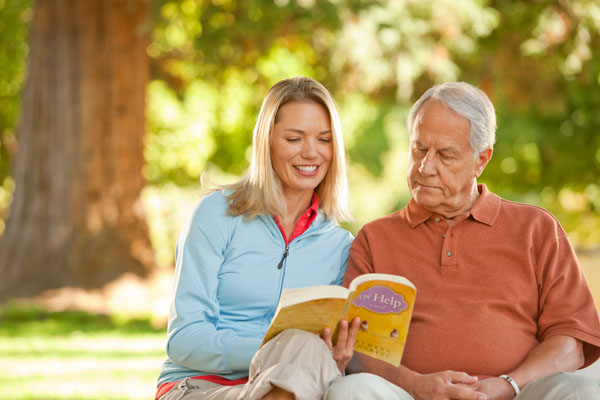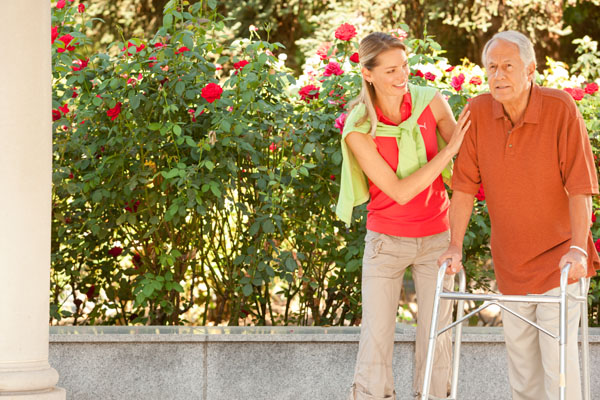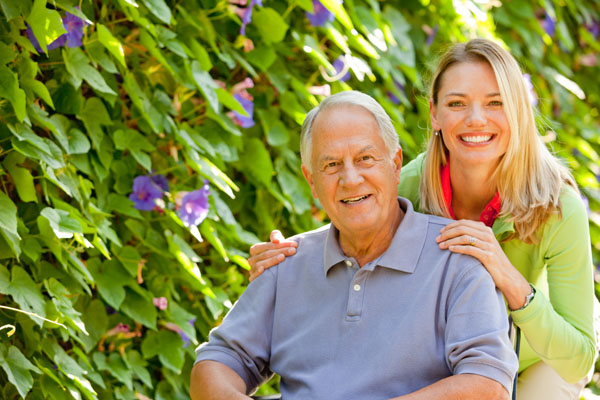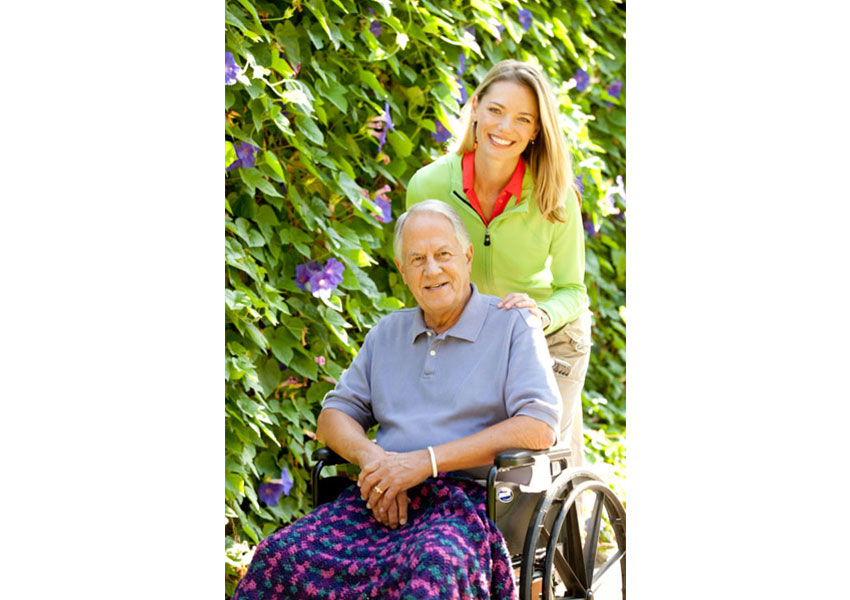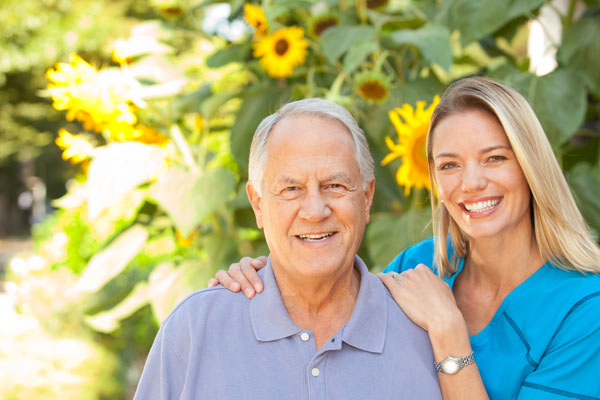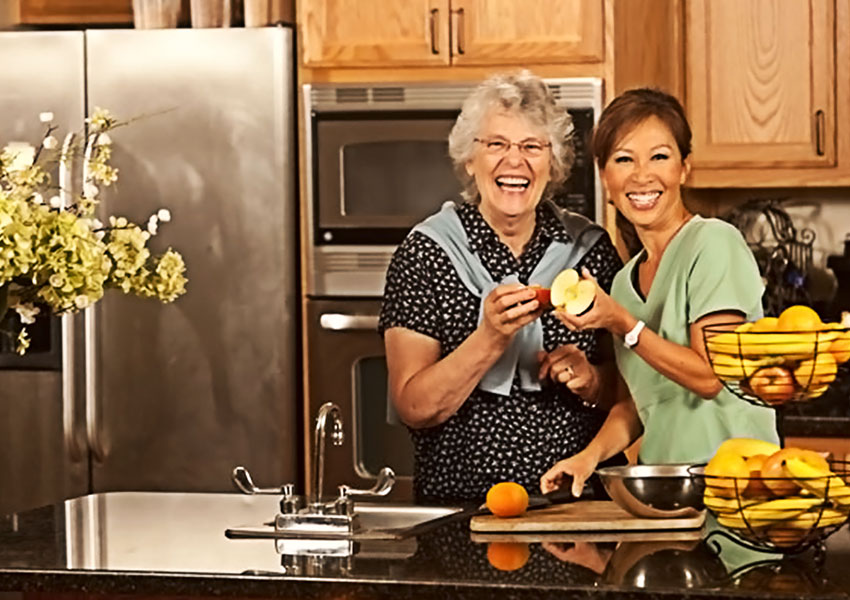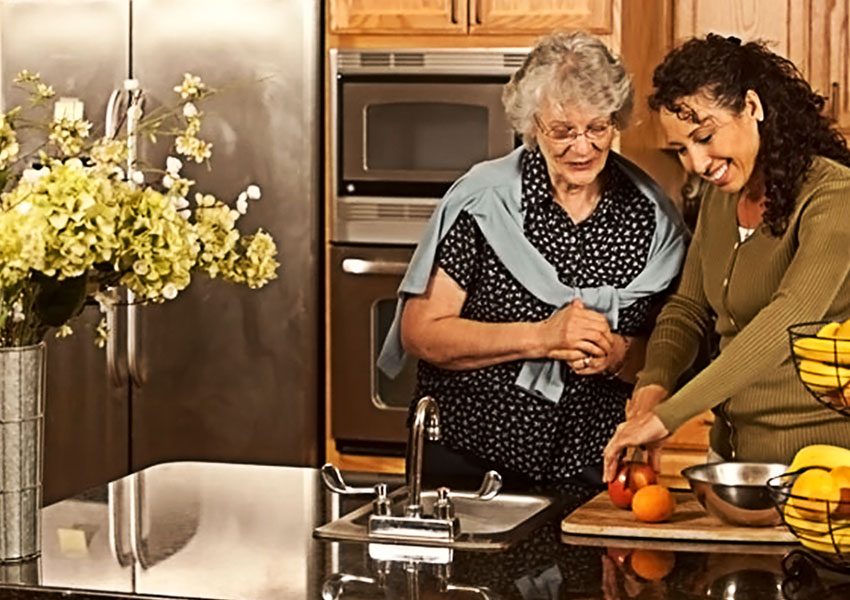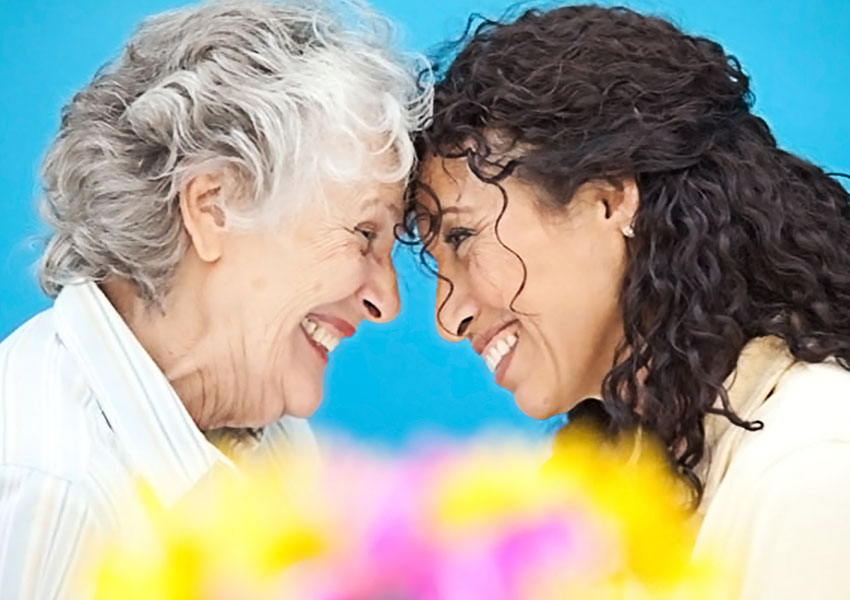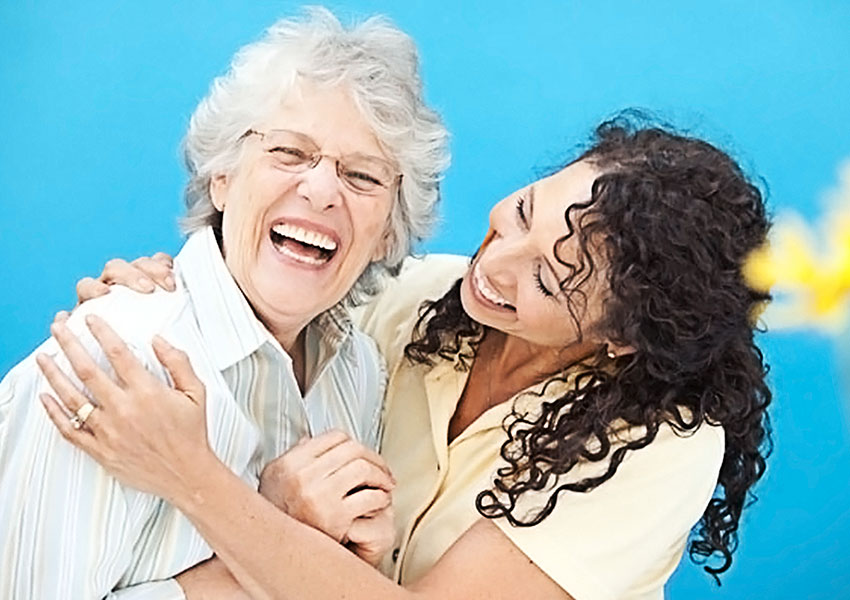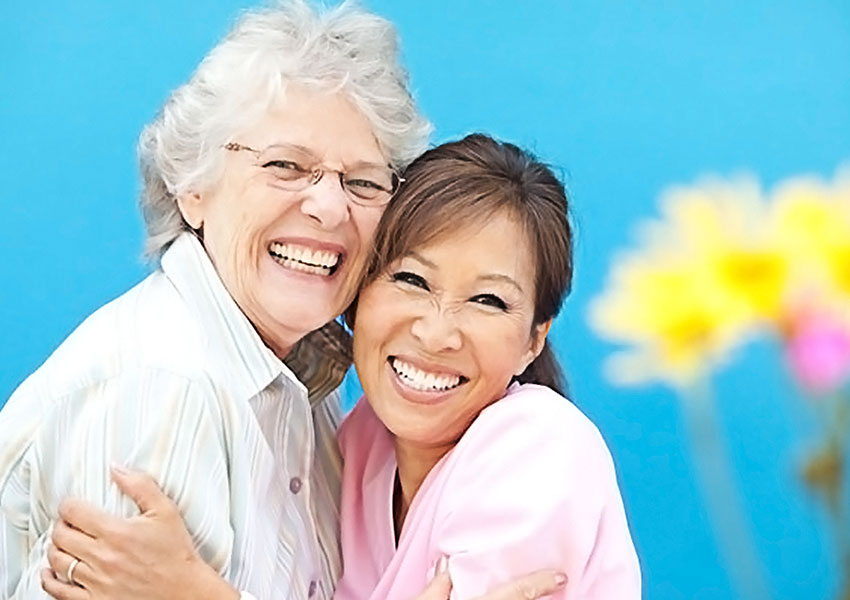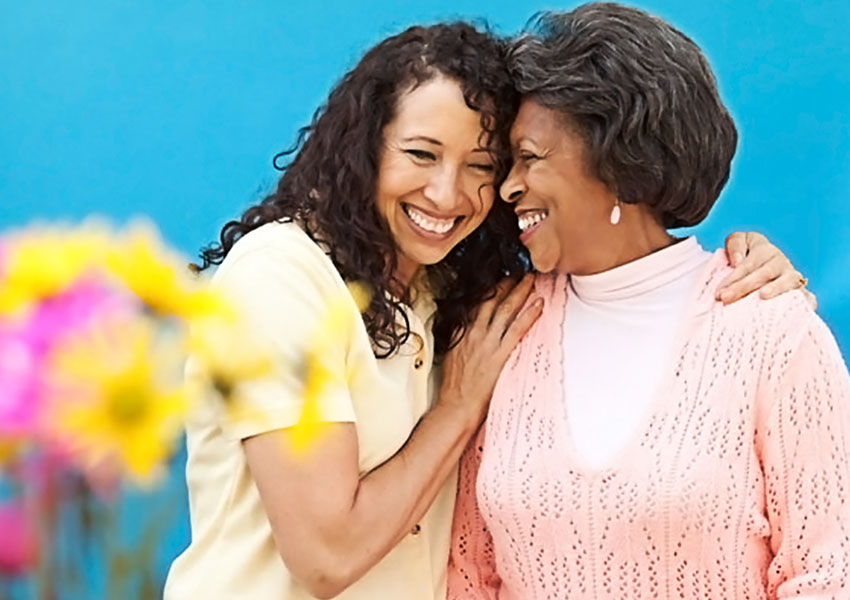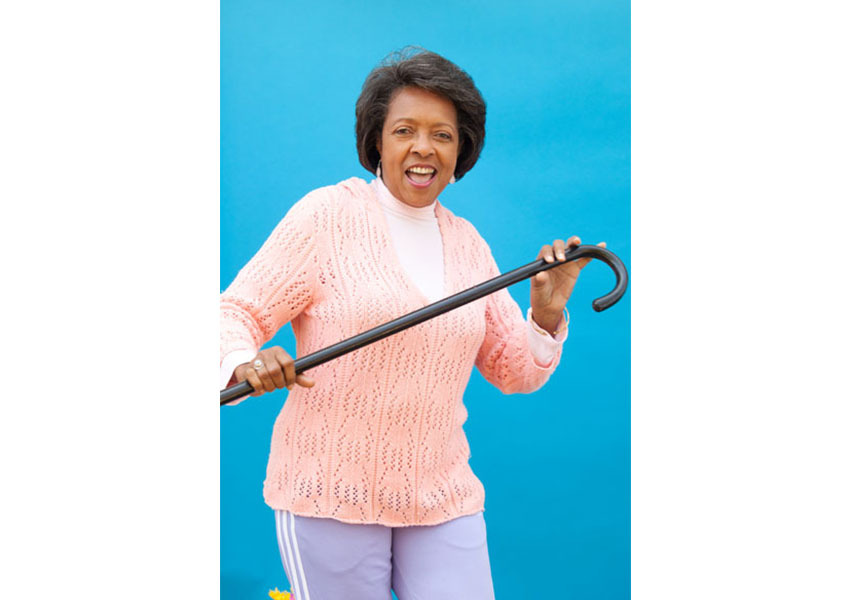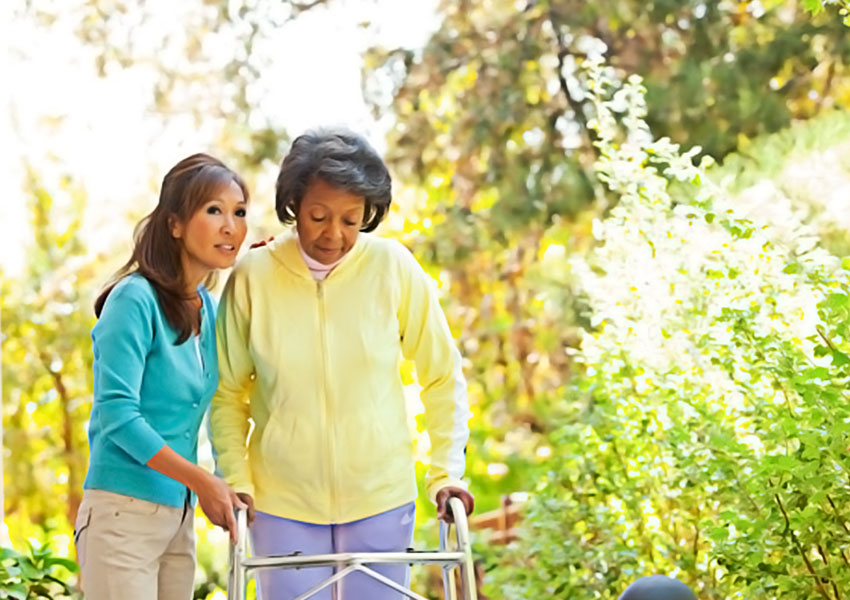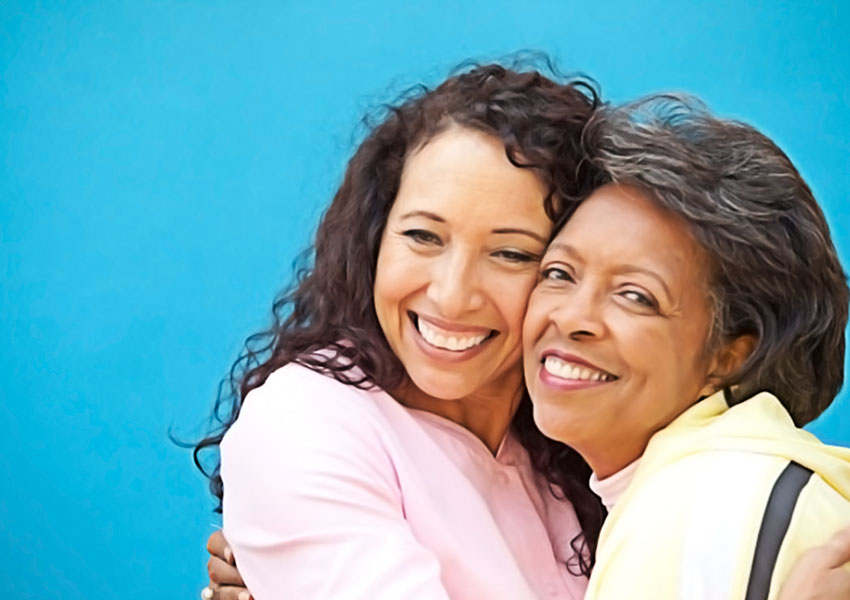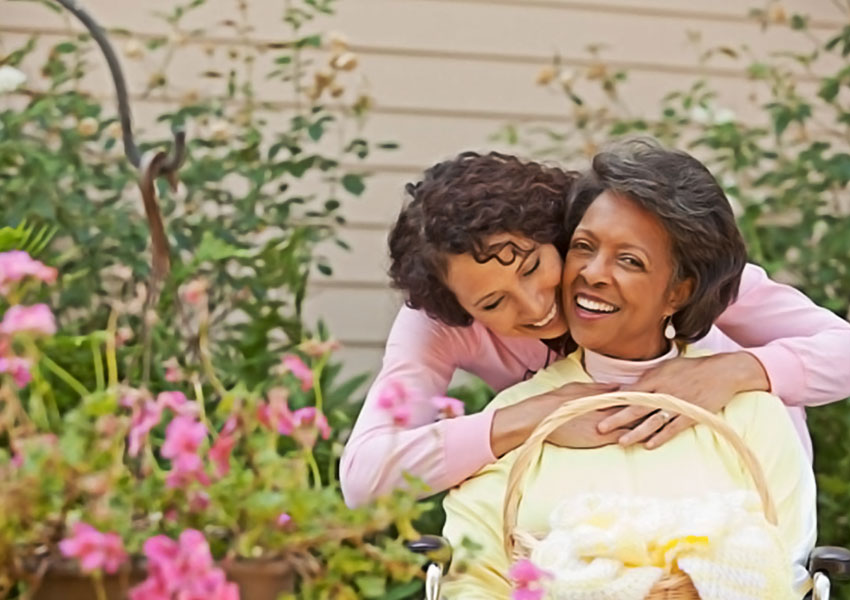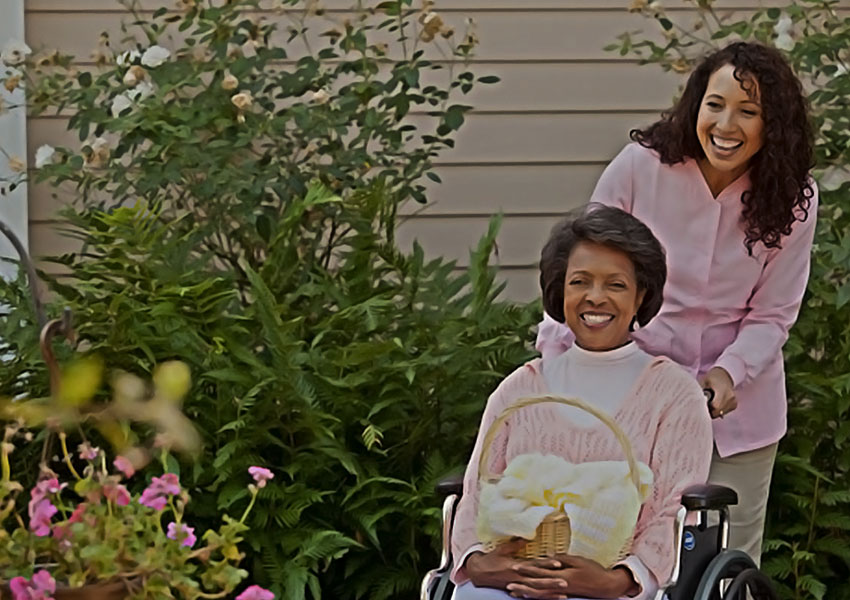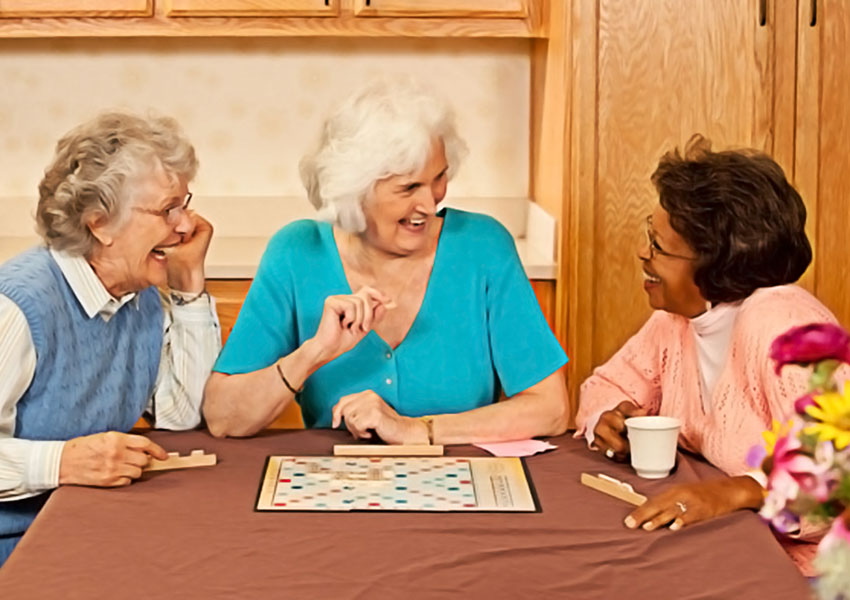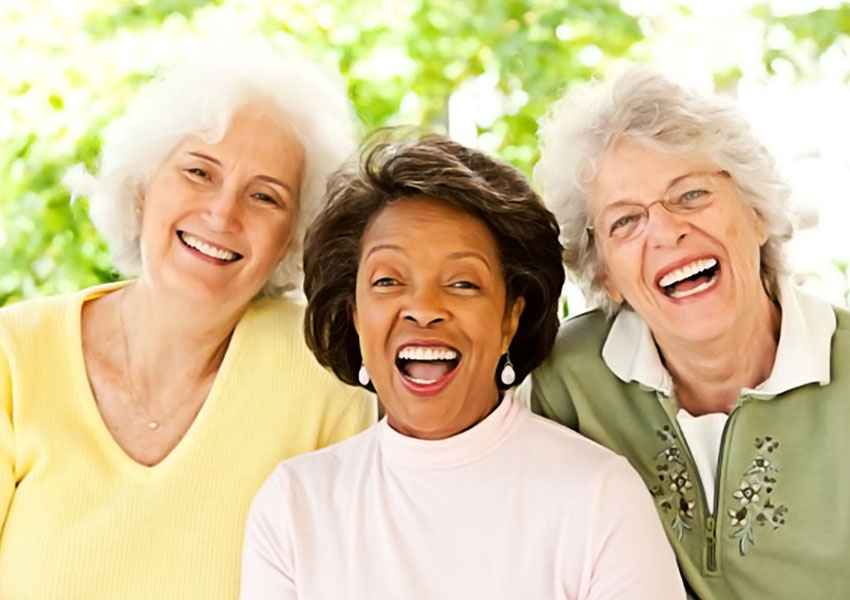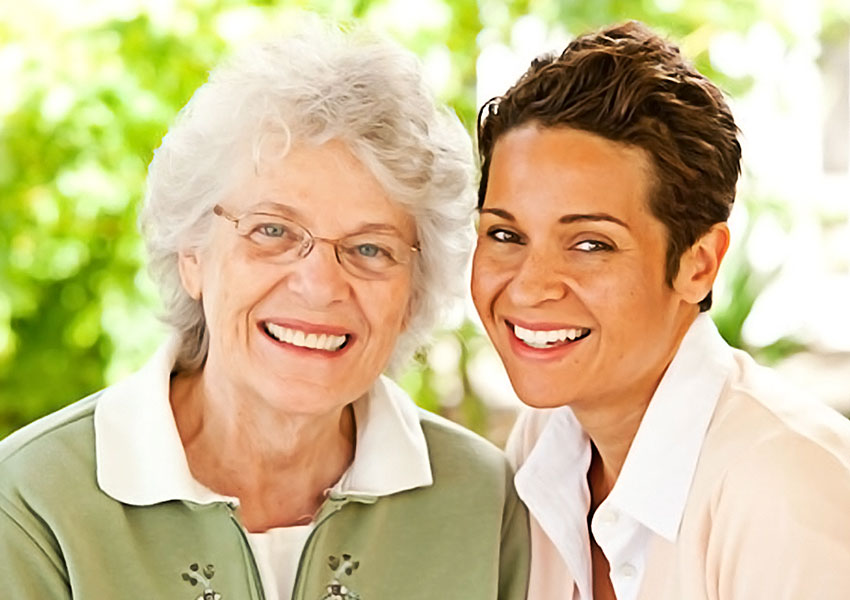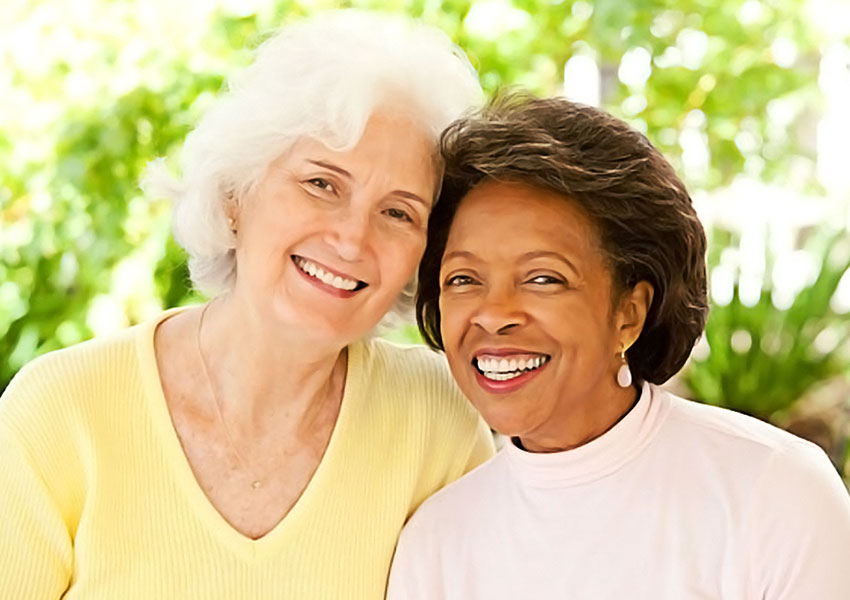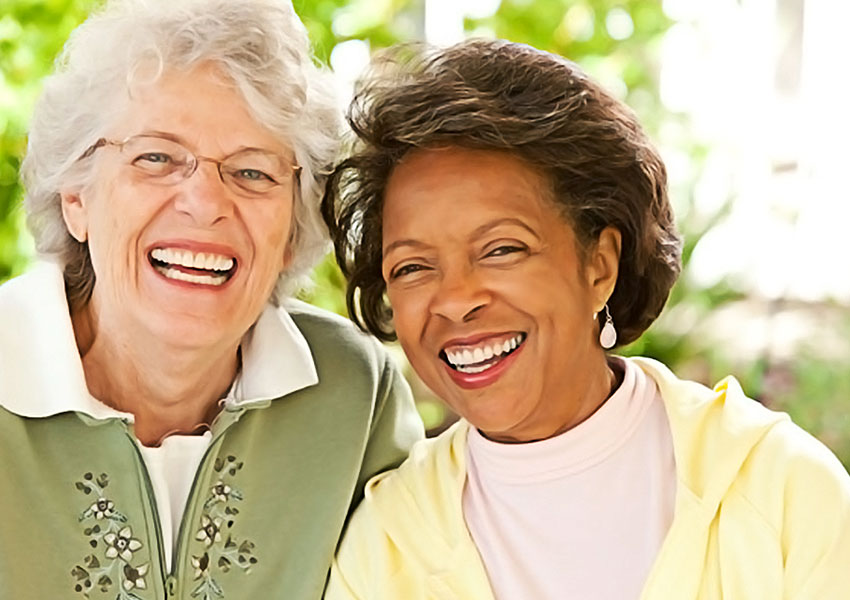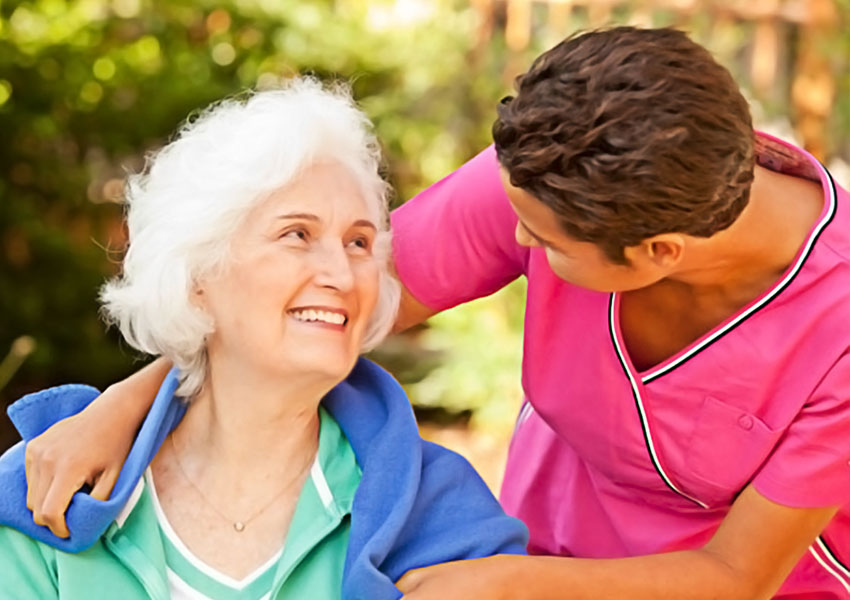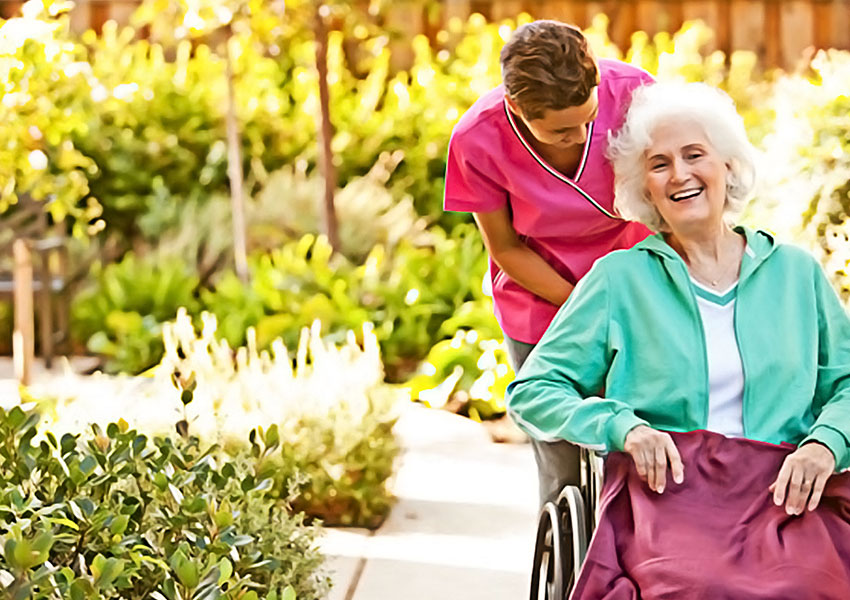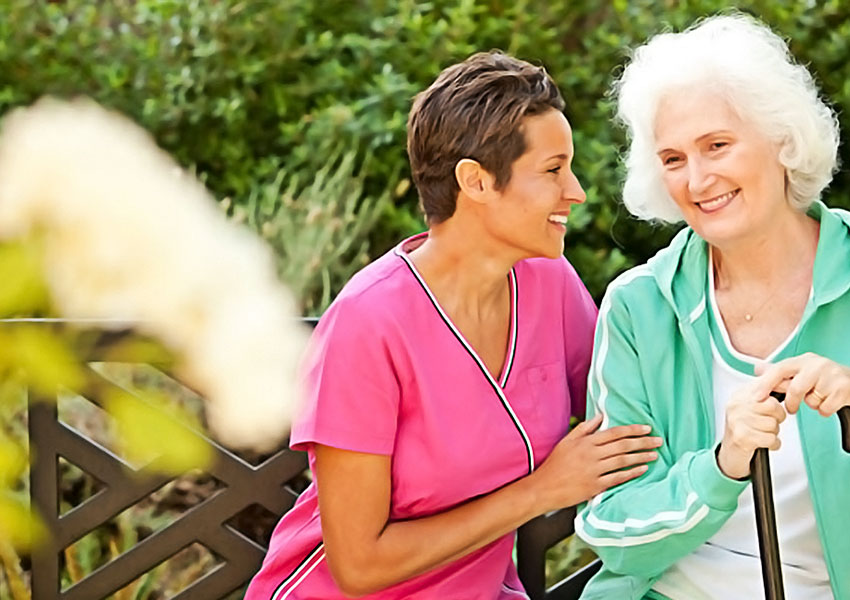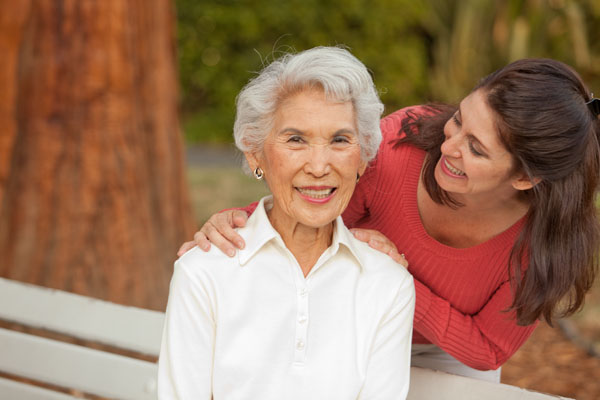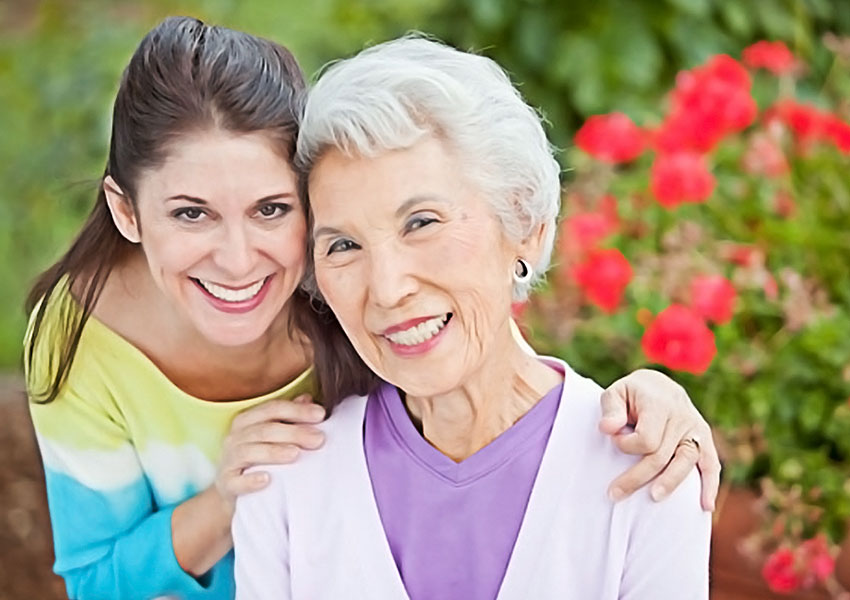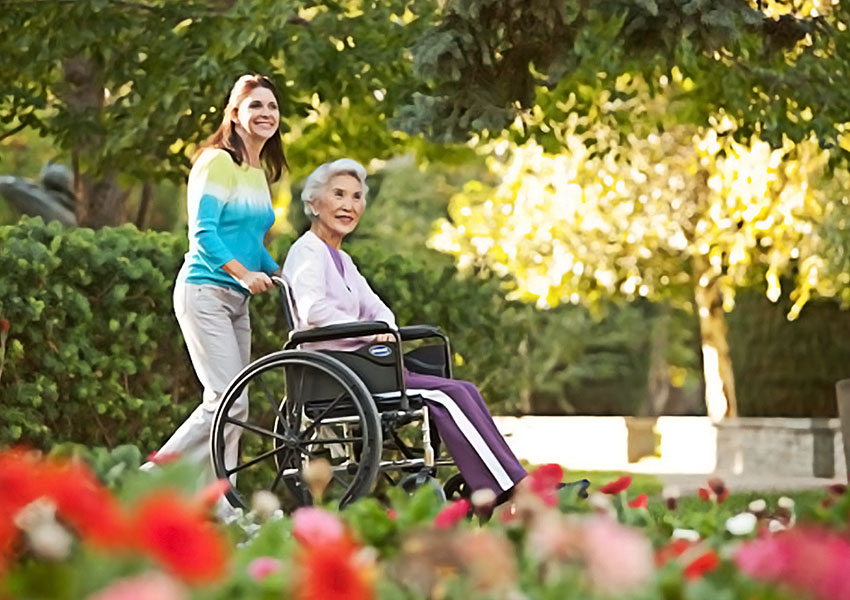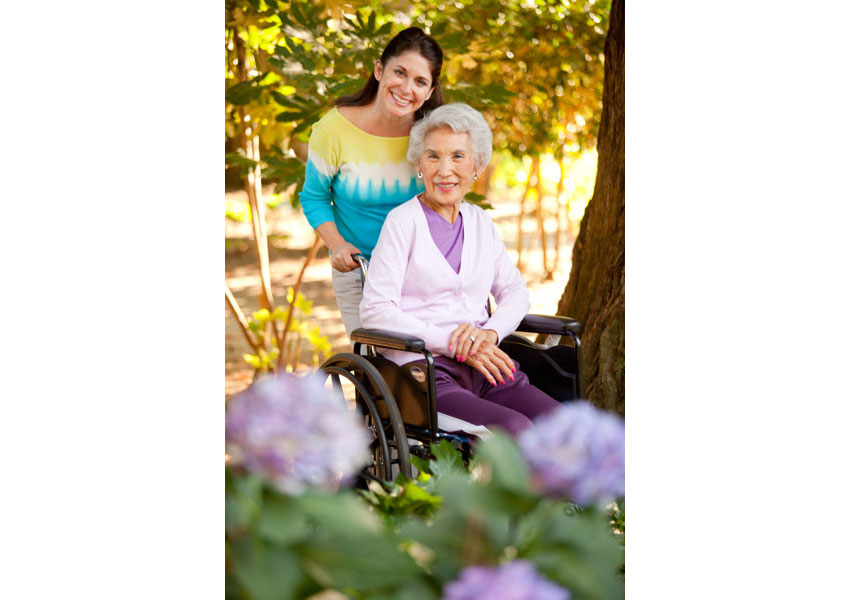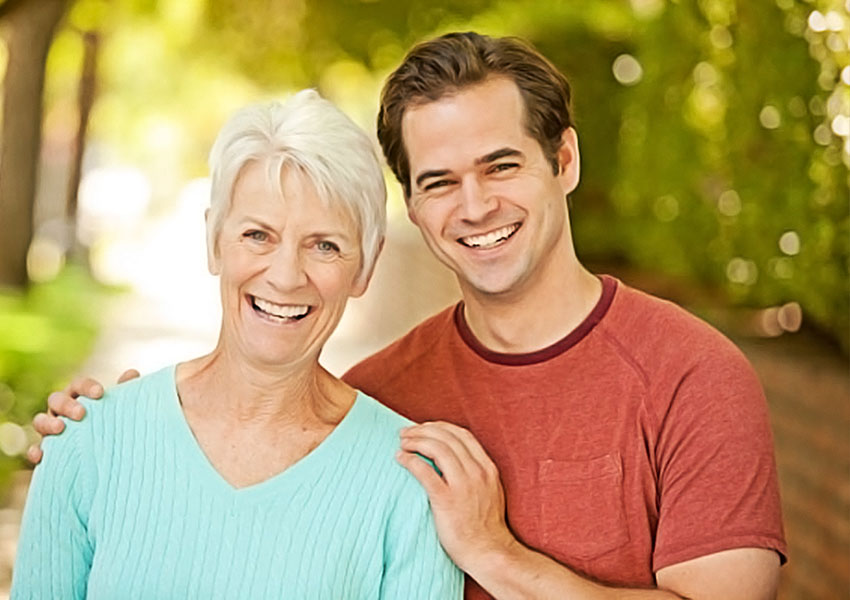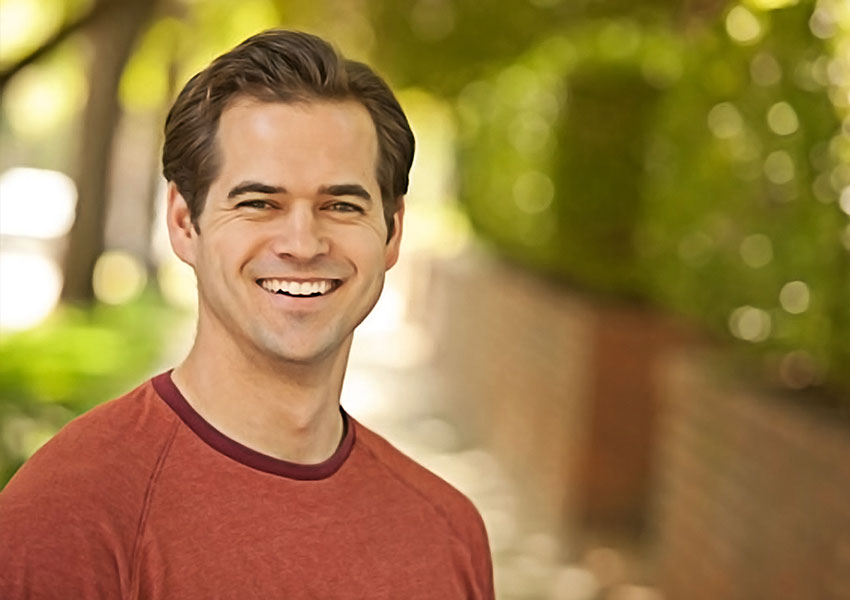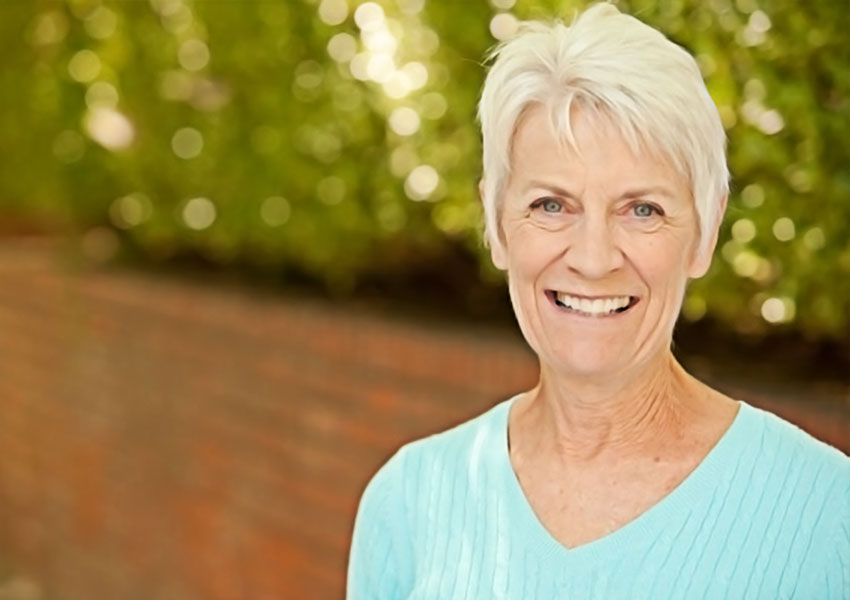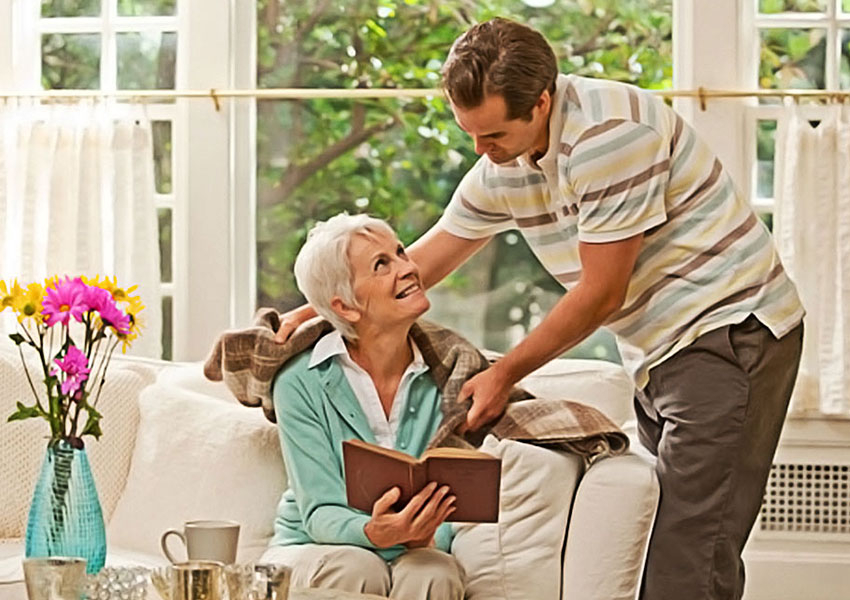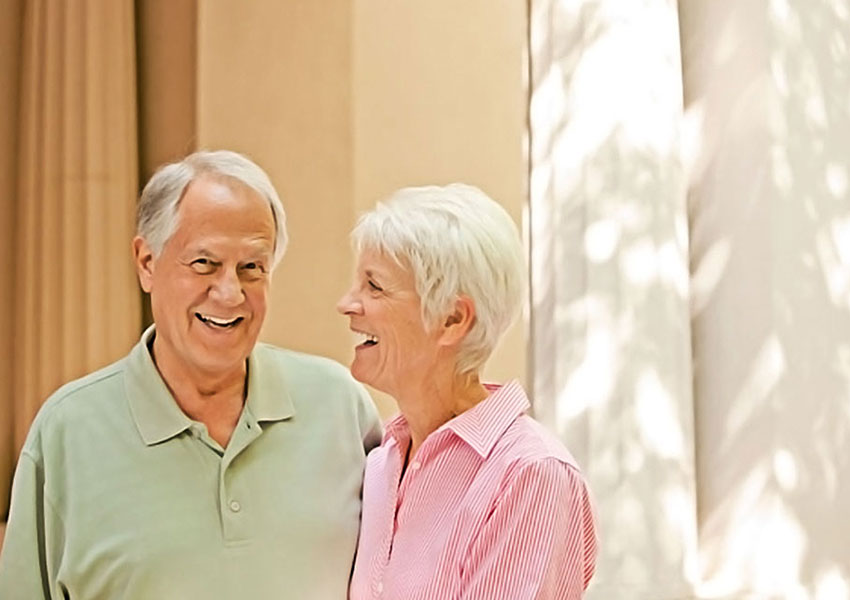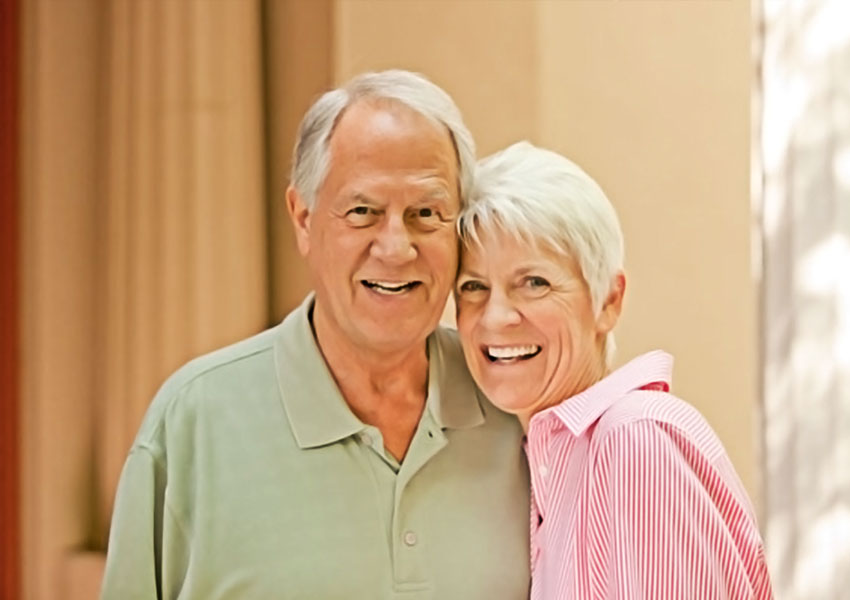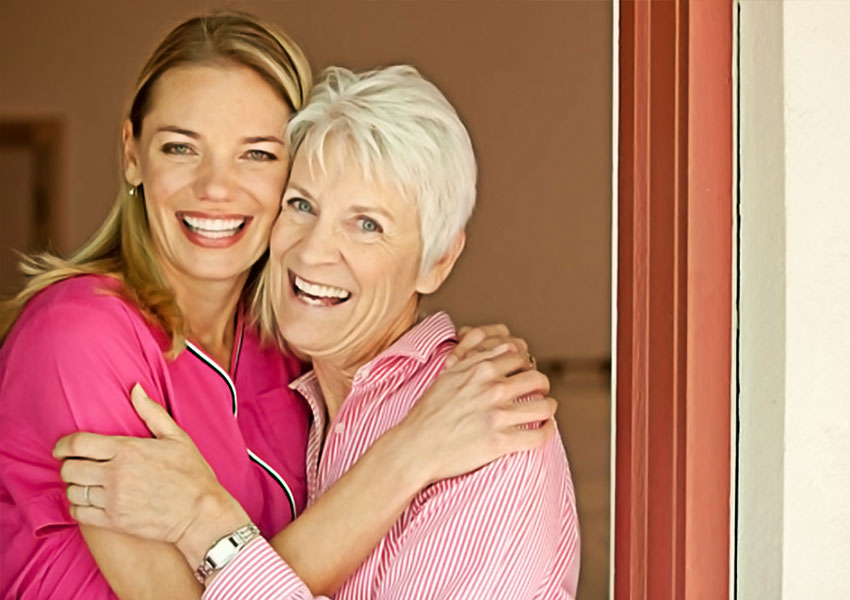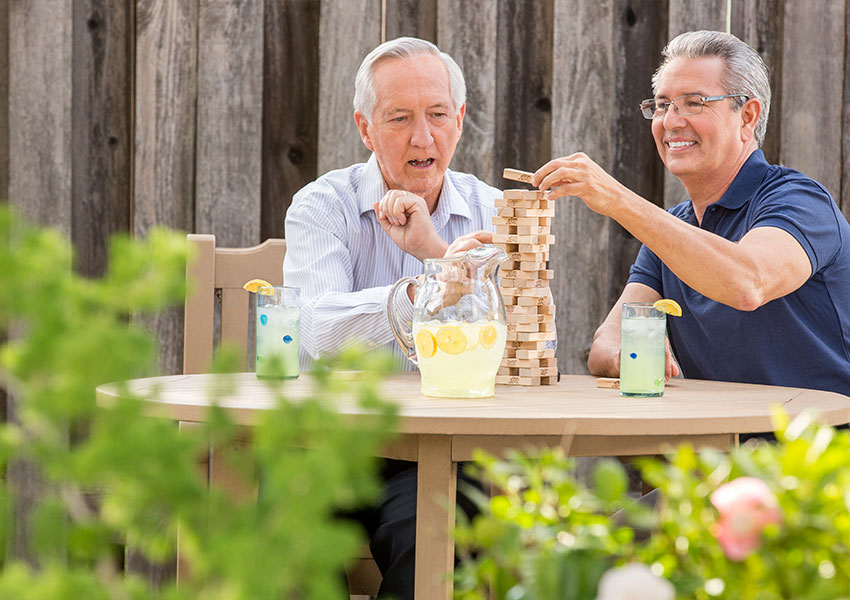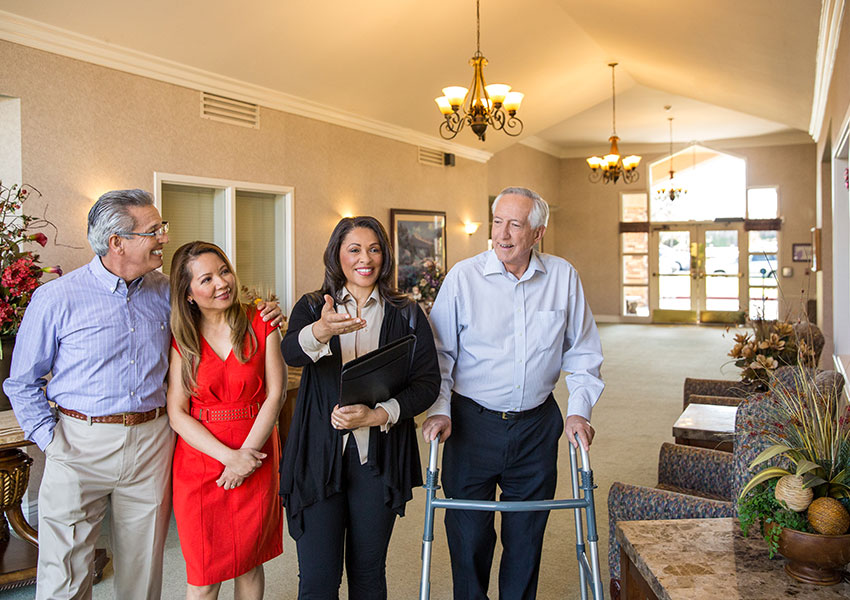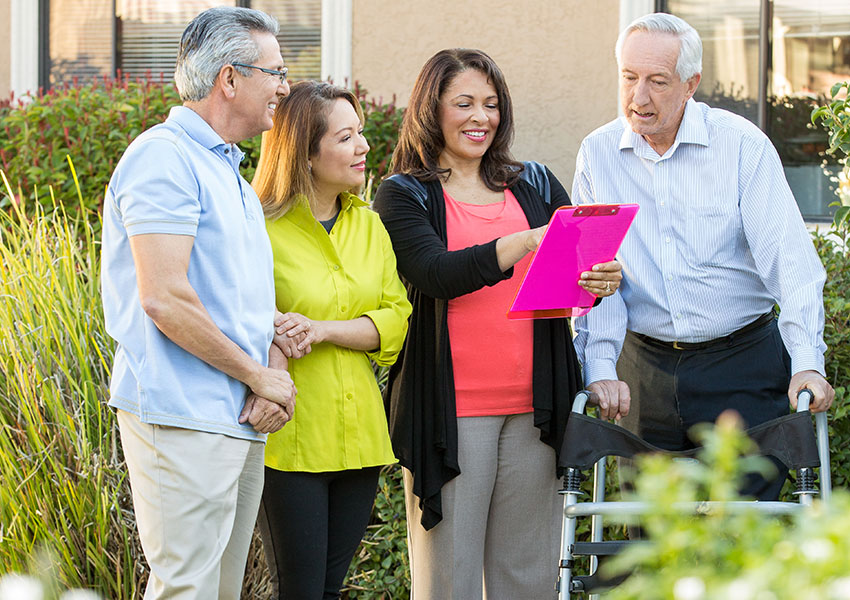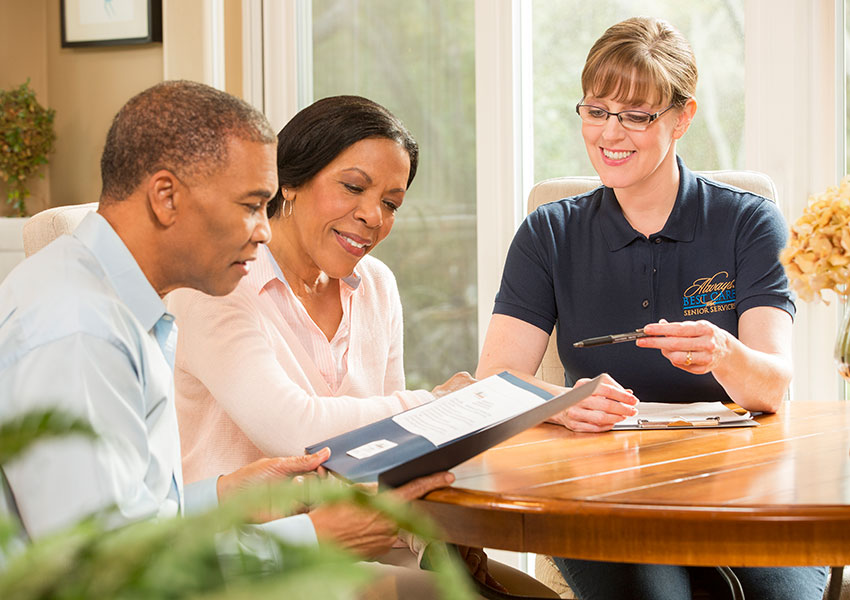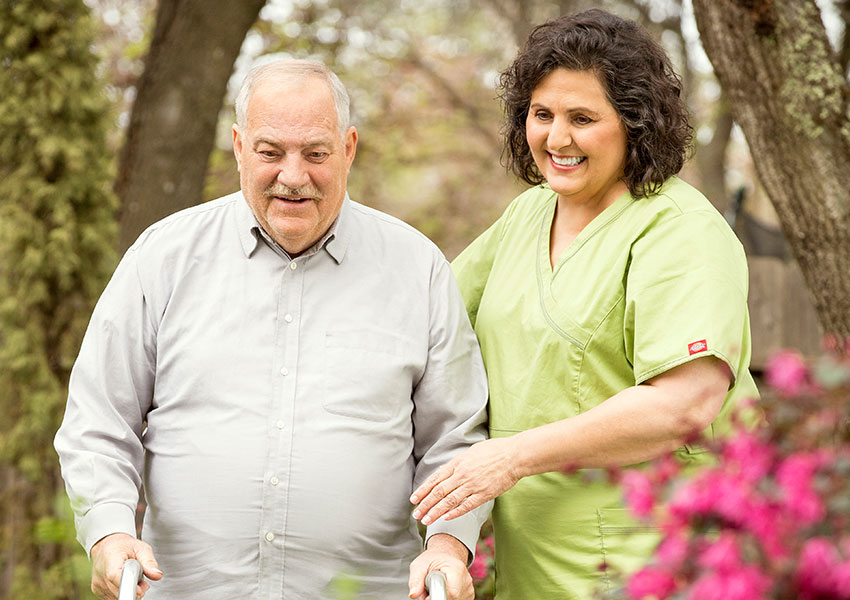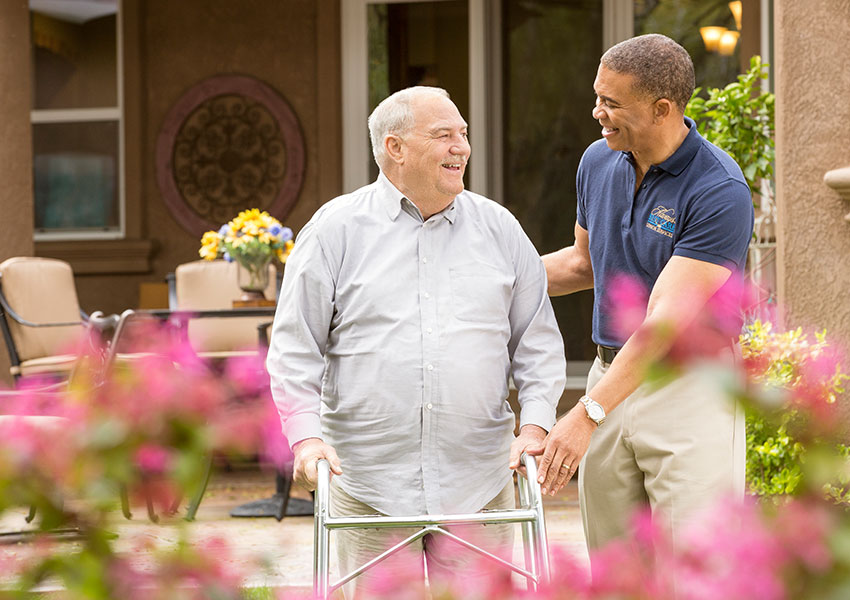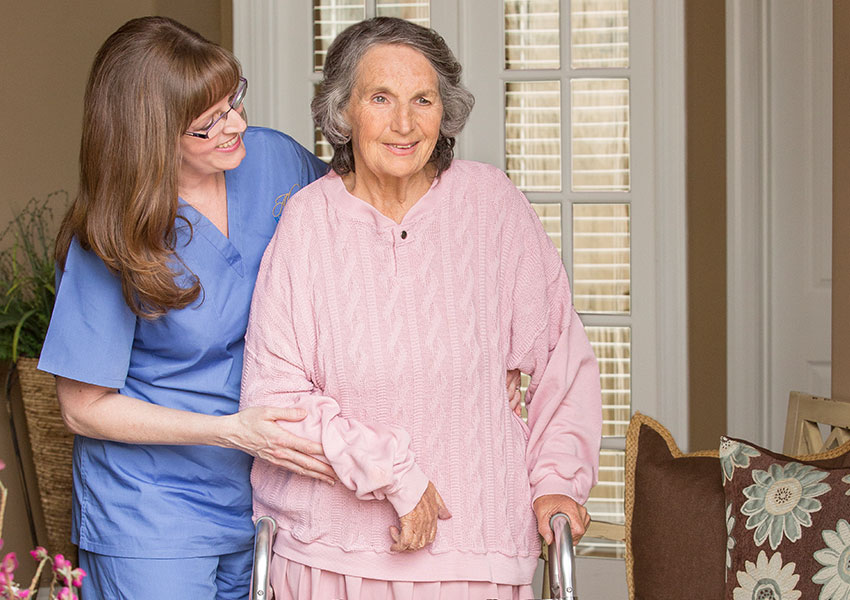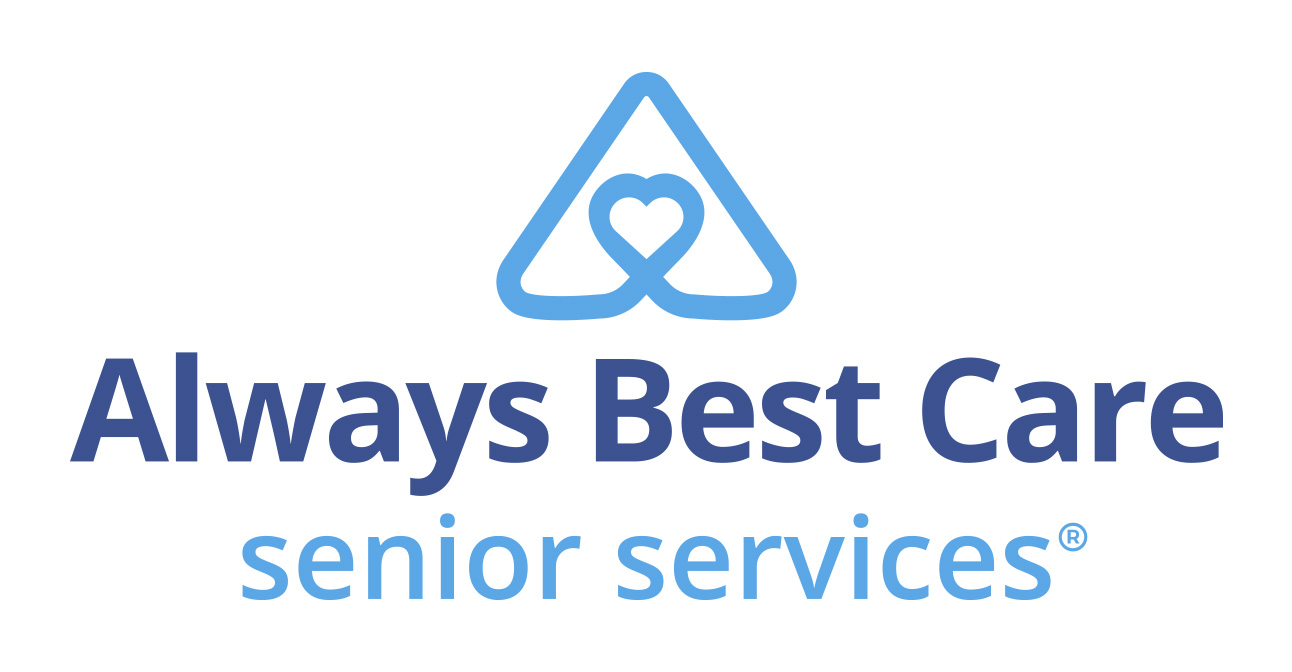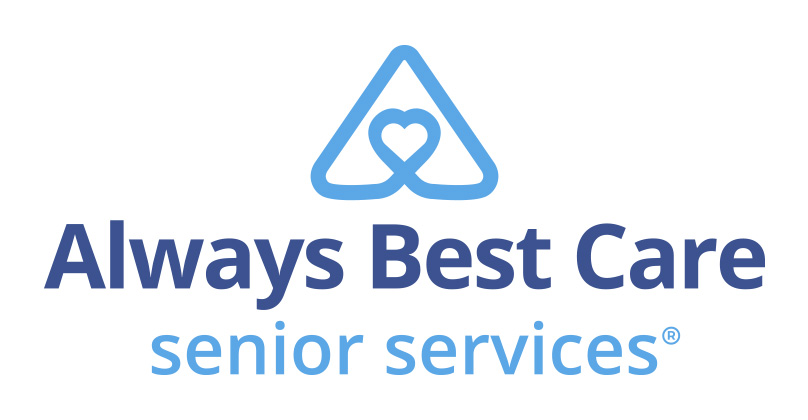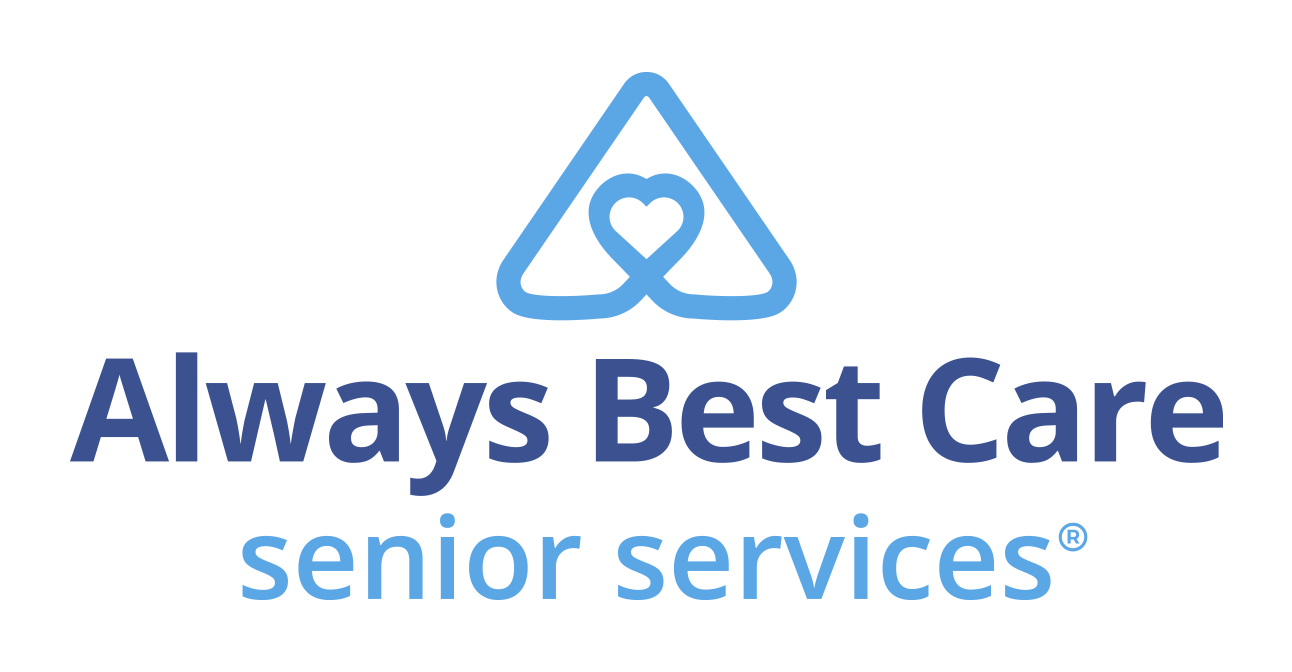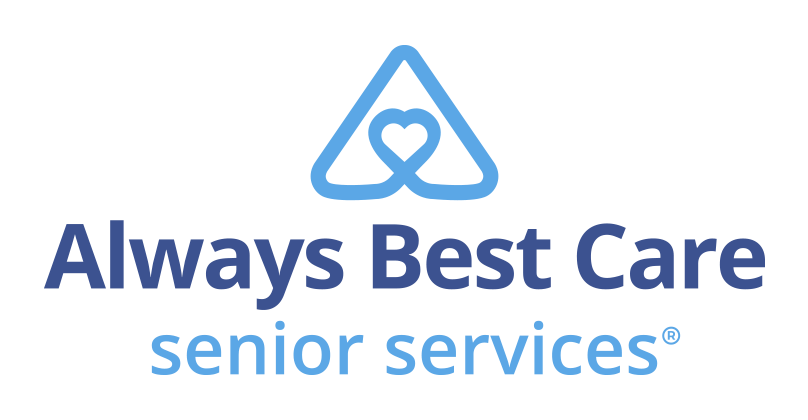Before taking yoga classes, Bunny Grossinger, 87, had serious back problems that limited her mobility. But after the New York City resident started working with a yoga instructor, she found that her life was changed physically and mentally. Though doctors had told her she would need a walker soon, she can now walk again on her own, she told the New York Daily News.
After seeing Grossinger’s experience, the yoga instructor started a yoga studio aimed at those over 65. For older adults, yoga has many benefits, including increased bone density and increased flexibility at a time when we feel more stiff and creaky.
What Is Yoga?
Yoga is a form of nonaerobic exercise that involves a program of precise posture, breathing exercises and meditation. In ancient Sanskrit, the word yoga means “union” (from American Cancer Society).
First practiced in India more than 5,000 years ago, yoga is one of the oldest mind-body health systems in existence. Yoga is said to cultivate prana, which means vital energy or life force, and is similar to qi (or chi) in traditional Chinese medicine. People who practice yoga claim it leads to a state of physical health, relaxation, happiness, peace and tranquility.
More than a hundred different types of yoga are practiced in the United States today. Most of them are based on hatha yoga, which uses movement, breathing exercises and meditation to achieve a connection between mind, body and spirit.
Practitioners say yoga should be done either at the beginning or the end of the day. A typical session can last between 20 minutes and an hour. A yoga session starts by sitting in an upright position and performing gentle movements, all of which are done very gradually, while taking slow, deep breaths from the abdomen. A session may also include guided relaxation, meditation and sometimes visualization. It often ends with the chanting of a meaningful word or phrase, called a mantra, to achieve a deeper state of relaxation.
If you’re just starting out or haven’t done yoga for a while, don’t get turned away from yoga classes by the young athletic types wearing their skintight yoga pants and shirts, able to do Downward-facing Dog without thinking about it. Don’t be discouraged if you have a hard time doing the Warrior pose, because your body won’t bend over that far. It can take a while to limber up and stretch the muscles. Experts advise starting slowly and finding a beginner class, preferably one for older adults.
When we were younger, yoga was considered a strange esoteric practice done by people wearing white turbans. Now it’s become accepted, a regular fixture of recreation centers, health clubs,
senior centers and assisted living residences. Some health plans offer to pay for yoga classes to keep their clients healthy and fit.
Multitude of Benefits
While ancient yoga practitioners promised a reversal of the aging process, research hasn’t yet been able to back up that claim. Still, studies have documented an amazing array of benefits from this 5,000-year-old form of exercise.
Increases strength and flexibility. As we get older, our range of motion becomes limited, which makes us more vulnerable to bad falls. Yoga stretches all parts of the body, including the spine, which is often not affected by other exercises, such as walking. Yoga’s poses stretch muscles, ligaments and tendons and lubricates joints. By repeating the poses, we improve balance and increase strength.
Improves bone health. A gentle yoga practice may can be effective in increasing bone density.In one pilot study involving adults with an average age of 68, who practiced yoga for 10 minutes each day researchers found subjects gained bone density.
Aging women have an increased potential for developing osteoporosis, a disease that causes bones to become brittle and prone to breaking. Because yoga’s postures are weight-bearing and involve balance, they can help women reduce the possibility of bone fractures by maintaining bone strength and promoting joint agility.
Relieves stress. Numerous studies have shown that yoga can help reduce stress and anxiety. Because you concentrate on the poses and breathing deeply, yoga centers you in ways that most exercise can’t. At the same time, yoga can enhance your mood and overall sense of well-being.
Decreases migraines. Research shows that migraine sufferers have fewer and less painful migraines after three months of yoga practice. It’s not clear why but it could be that yoga works to relieve both mental stress and physical misalignment that cause migraines and other issues.
Improves sleep. Harvard researchers found that eight weeks of daily yoga significantly improved sleep quality for people with insomnia who participated in this study. Another study found that twice-weekly yoga sessions are associated with better sleep and less fatigue for cancer survivors. These results may be due to exercise’s physical benefits plus yoga’s breathing and relaxation techniques, although the reasons have yet to be determined.
Lessens chronic pain. A Harbor-UCLA Medical Center study reported participants needed less pain medication after only four weeks of yoga. Other studies report a decrease in arthritis pain among the participants.
Manages chronic conditions. Yoga can reduce risk factors for chronic diseases, such as heart disease and high blood pressure. According to a report to the National Institutes of Health, some evidence suggests yoga may be helpful when used with conventional medical treatment to help relieve some of the symptoms linked to cancer, asthma, diabetes, drug addiction, high blood pressure, heart disease and migraine headaches. In a study by the Yale University School of Medicine, researchers found that adding three days of yoga and meditation to your weekly routine may reduce your risk of heart disease.
Reduces blood pressure. Several studies have shown yoga can reduce high blood pressure because of its calming techniques and physical activity, which both help to lower blood pressure. In a study at the University of Pennsylvania, 58 men and women, aged 38 to 62, were divided into three groups: a diet and weight reduction and walking program; a yoga practice of two to three times per week for 24 weeks; and a combo program consisting of both yoga and dietary intervention. The research team found that only the yoga group experienced the biggest drop in their blood pressure (“Yoga Can Help Lower Blood Pressure,” June 2013, Medical News Today).
Eases depression: Researchers from Boston University School of Medicine found that yoga may be superior to other forms of exercise in its positive effect on mood and anxiety. The researchers contrasted GABA levels in the brain, which are associated with depression and other widespread anxiety disorders, of yoga practitioners and walkers over a 12-week period. One group practiced yoga three times a week for one hour, while the remaining subjects walked for the same period of time. Not only did the yoga practitioners’ brains show higher levels of GABA, but they reported less anxiety and a better mood. (From “New Study Finds New Connection Between Yoga And Mood,” June 2013, Medical News Today).
In addition to these listed benefits, other reports state that yoga can increase hand-grip strength in rheumatoid arthritis patients, control or decrease weight, reduce breathing difficulties in bronchial asthmatics and relieve menopausal discomfort.
Simple Exercises
Although yoga is generally considered safe for most healthy people when practiced under the guidance of a trained instructor, see your health care provider before you begin yoga if you have any of the following conditions or situations (from “Yoga Precautions,” Mayo Clinic):
• A herniated disk • A risk of blood clots • Eye conditions, including glaucoma • Hyperthyroidism • Pregnancy • Severe balance problems • Severe osteoporosis • Uncontrolled blood pressure
Taking a yoga class can help beginners, especially, because trained instructors can work with their physical issues (bad knees, stiff back, etc.), and a class can provide the social benefit of interacting with others. You can also do some simple exercises at home (from “10 Yoga Exercises for Seniors,” How Stuff Works).
The One-legged Wind Releasing pose is a good, gentle stretch for the mid- to low-back and hips because it stretches all of the muscles in those areas, which helps resolve low back pain.
- Lie down on your back with your knees bent and your feet on the floor.
- Hug your right thigh to your chest, using a strap or belt to assist you, if necessary.
- Straighten your left leg along the floor, keeping your foot flexed.
- Keep your pelvis and right buttock on the floor (or, if you’re unable, keep your left leg slightly bent).
- Breathe deeply until you feel the muscles relax, and then stay a few breaths longer.
- Repeat on the other side.
The Staff pose helps strengthen the muscles in the mid-back, improving posture. It also strengthens the quadriceps to help stabilize the knees.
- Sit on the floor with your legs stretched out in front. It may help to sit with your shoulder blades against a wall with a small rolled-up towel between the wall and your lower back.
- Pull in your belly and sit up tall.
- Place your hands on the floor next to your hips, fingers pointing toward your toes.
- Without hardening your abdomen, flex your thigh muscles while pressing them down toward the floor, rotating them inward and drawing your groin muscles toward your tailbone.
- Flex your ankles, pointing your toes toward your body.
- Imagine your spine is a staff pressing into the floor, and try to hold this position for two to 10 deep breaths.
- Relax.
The Seated Forward Bend pose can help reduce blood pressure. Use a chair to avoid overtaxing your back.
- Sit on a chair, keeping your knees together and your feet flat on the floor.
- Inhale.
- As you exhale, bend forward, rounding your shoulders and bending your back forward one vertebra at a time.
- Let your arms hang by your sides.
- Hold this pose for three breaths.
As you do this pose, your chest should make contact with your thighs, with your forehead near your knees.
For flexibility in your legs, try the Legs in V pose:
- Sit on the floor with your legs comfortably spread apart in a V shape. It doesn’t matter if the V isn’t that wide to begin with; it’s more important to stretch comfortably.
- Grab a bunch of firm pillows and place them in front of you.
- Lean forward, keeping your neck long, and use the pillows to support your upper body. Breathe six times, allowing yourself to hang and feel the stretch along your legs.
Sources”5 Surprising Health Benefits Of Yoga,” Feb. 12, 2014, Huffington Post “10 Yoga Exercises for Seniors,” How Stuff Works“NYC Yoga Class Caters To Seniors,” June 26, 2012, Sunrise Senior Living“Seniors Can Find Confidence and Flow in Yoga Practice,” Aging Care“Yoga,” American Cancer Society“Yoga for the 50+,” Senior Fitness
Reprinted by Always Best Care Senior Services with permission from Senior Spirit, the newsletter of the Society of Certified Senior Advisors The Certified Senior Advisor (CSA) program provides the advanced knowledge and practical tools to serve seniors at the highest level possible while providing recipients a powerful credential that increases their competitive advantage over other professionals. The CSA works closely with Always Best Care Senior Services to help ABC business owners understand how to build effective relationships with seniors based on a broad-based knowledge of the health, social and financial issues that are important to seniors, and the dynamics of how these factors work together in seniors’ lives. To be a Certified Senior Advisor (CSA) means one willingly accepts and vigilantly upholds the standards in the CSA Code of Professional Responsibility. These standards define the behavior that we owe to seniors, to ourselves, and to our fellow CSAs. The reputation built over the years by the hard work and high standards of CSAs flows to everyone who adds the designation to their name. For more information, visit www.society-csa.com
To print this article CLICK HERE




